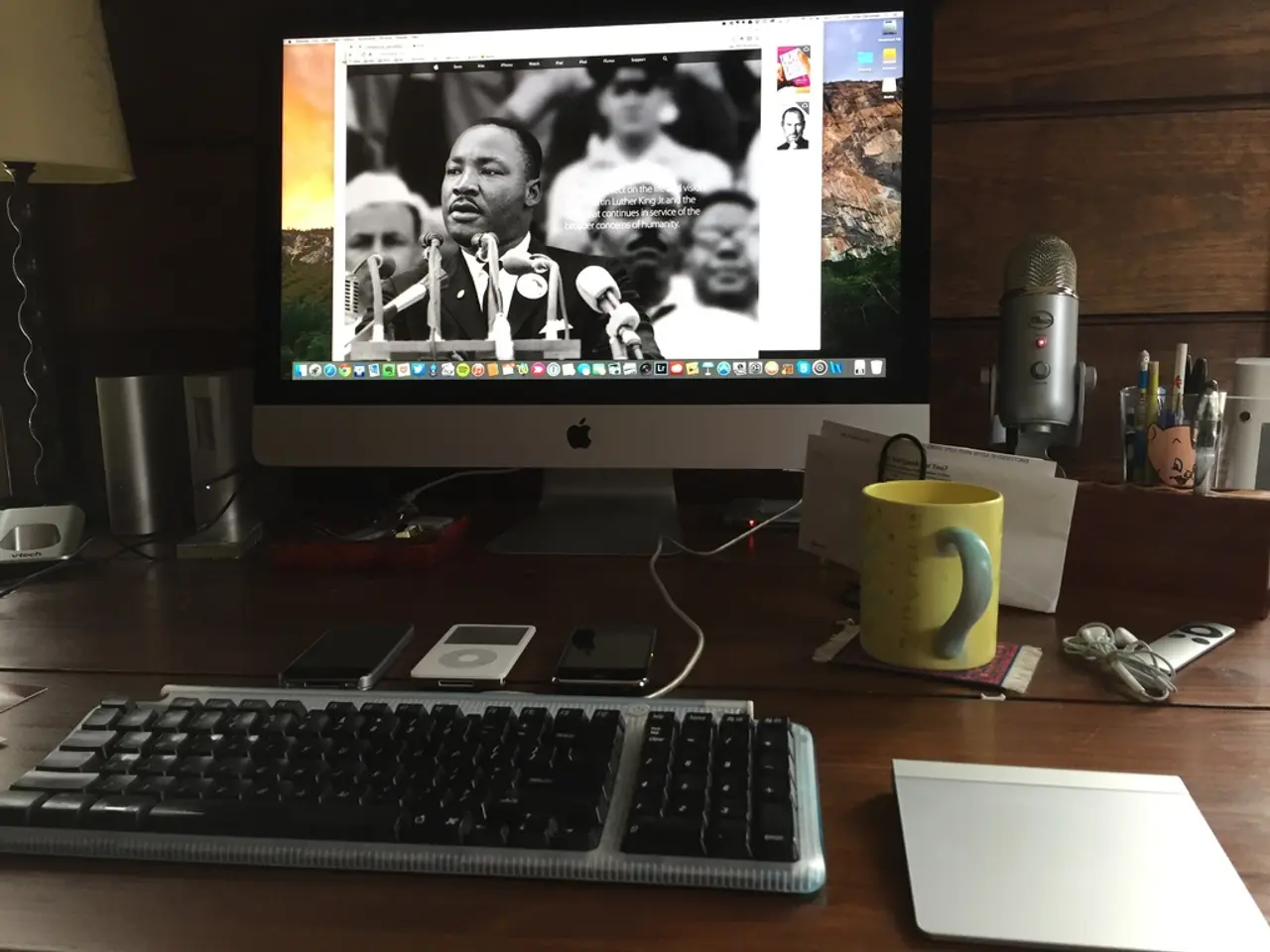The Convenience of AI in Video Editing: A Breakdown of the Key Components for Streamlined Editing Processes
In the realm of video editing, the fusion of Artificial Intelligence (AI) and powerful computer setups is transforming the industry, offering significant benefits in efficiency, creativity, and workflow speed.
AI tools automate repetitive and time-consuming tasks such as trimming clips, generating subtitles, colour correction, fact-checking, and content categorization, freeing editors to focus on creative and complex aspects of post-production. Additionally, AI can accelerate content repurposing, translation, and moderation, which widens audience reach and improves content compliance.
A proper computer setup enhances these benefits by providing the necessary processing power, memory, and speed to fully leverage AI capabilities. For smooth video editing, a fast multi-core processor (like Intel i7/i9 or AMD Ryzen 7/9), a minimum of 16 to 32GB RAM, and dedicated GPUs from NVIDIA or AMD are recommended. These hardware resources help handle AI algorithms and video rendering efficiently, reducing lag, speeding up workflows, and enabling higher resolution editing (4K or above).
The combination of AI video editing tools and a strong computer setup delivers a streamlined, faster, and more versatile editing process. Key benefits include:
- Increased productivity and time savings from automating manual tasks like cutting footage and generating transcripts.
- Higher content quality through AI-enhanced colour grading, effects, and fact-checking accuracy.
- Cost-effectiveness by reducing the need for multiple specialized software tools and minimizing manual labour.
- Customization and creative flexibility with AI features that allow video length, style, tone, and other elements to be adjusted easily.
- Smooth handling of large files and complex projects due to proper hardware, reducing editing bottlenecks and improving real-time previews.
AI tools offer productivity hacks and timesavers. For instance, DaVinci Resolve's SuperScale can deliver 3x or 4x enhanced upscaling of footage, while Topaz AI's denoising can intelligently distinguish between noise and detail to clean up and sharpen footage. AI can potentially rescue seemingly unsalvageable footage, such as out-of-focus shots or footage with camera-shake, and can convert footage to slow-motion by generating additional frames.
Moreover, AI tools like Canva's AI can generate voiceovers for video content, and video for social media is always expected to be subtitled, and providing the option of subtitles is important for accessibility reasons. AI can provide auto subtitle and voiceover features for video editing.
DaVinci Resolve, PowerDirector, Premiere, and other modern editing programs now incorporate intelligent masking tools for auto masking. Topaz AI's system requirements recommend a discrete graphics card with at least 6GB VRAM for optimal performance. Smart Reframe, found in DaVinci Resolve, follows moving subjects and is particularly useful for vertical video.
Together, AI video editors and a robust computer setup deliver a streamlined, faster, and more versatile editing process that suits both professionals and beginners aiming to improve their workflow and final output quality.
- The advancement of AI and powerful computer setups in video editing opens up new avenues for creativity and efficiency, enabling designers to concentrate on creative aspects while automating repetitive tasks.
- AI tools in video editing, such as DaVinci Resolve and Topaz AI, can offer impressive enhancements like super scaling, denoising, and auto masking, which contribute to higher quality productions.
- With AI, smartphones and gadgets can now offer innovative features like intelligent voiceovers and auto subtitles, making their content more accessible to a wider audience.
- Proper computer setups, including multicore processors like Intel and AMD, generous RAM, and dedicated GPUs, streamline the process of video editing by handling AI algorithms and video rendering efficiently.
- The integration of AI technology into UI and UX design principles can vastly improve the layout and user experience of creative tools like video editing software, leading to a more intuitive and productive environment.
- In the realm of artistic expression, AI plays a crucial role in transforming the way we approach editing video, pushing the boundaries of what's possible with technology, all while elevating the overall creative output.




